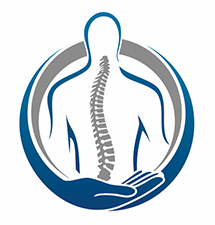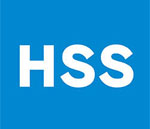Motion Preservation
Motion preservation surgery includes procedures that provide stability to the spine yet permit near normal movement.
Artificial Disk Replacement:
Artificial disc replacement is a surgical method of replacing the diseased or damaged intervertebral discs of the spinal column with an artificial disc to restore motion to the spine. It can be considered as an alternative to spinal fusion for patients with back pain.
Artificial disc replacement is indicated in patients with degenerative disc disease, a condition referred to as a gradual degeneration of the disc between the vertebrae caused by a natural process of aging.
Your doctor may recommend certain tests such as, magnetic resonance imaging (MRI), discography, computed tomography (CT or CAT scan), and X-rays to identify the cause of pain. Patients with back pain caused from bulged or worn out intervertebral discs and patients with no significant facet joint disease are recommended for artificial disc replacement. The surgery is not recommended in patients with scoliosis, previous spinal surgery and morbidly obese.
During the surgery, an incision is made in the abdomen, and the muscles and the blood vessels are gently moved apart for better view and room for surgery. The disc space is opened and the damaged disc is removed and replaced with the artificial disc.
Disc design
Artificial disc designs are of two types, disc nucleus replacement and total disc replacement.
With the disc nucleus replacement only the central portion of the disc (nucleus) is removed and replaced with mechanical device, while the outer ring of the disc (annulus) is not removed. However disc nucleus replacement procedure is not commonly practiced and is in investigative stage. In total artificial disc replacement, the annulus and nucleus are replaced with the mechanical device to restore normal spinal function. Artificial discs are usually made up of metal, plastic or a combination of metal and plastic. Medical grade plastic (polyethylene) and medical grade cobalt chromium or titanium alloy are used for disc design.
An artificial disc implantation does not require healing and therefore rehabilitation can be started soon after the surgery. Hospital stay of about 2 to 4 days may be required. Basic exercises including regular walking and stretching may be performed during the first few weeks after surgery.
Artificial disc replacement surgery may be associated with certain complications such as:
- Infection
- Injury to blood vessels
- Dislodgement or breakage of the device
- Wear of the device materials
- Continued or increasing pain
- Bleeding
- Bladder problems
Laminoplasty
Laminoplasty is a surgical technique for the management of spinal stenosis; an abnormal narrowing of the spinal canal. The aim of the surgery is to relieve the pressure over the spinal cord, alleviate pain and restore function. The most common cause of spinal stenosis is age related degenerative arthritis. Degenerative changes of the spine, bone spurs, arthritis and disc herniation cause narrowing of the spinal canal. This can exert pressure over the spinal cord and/or the nerve roots causing pain in the neck or back, numbness, muscle weakness, and tingling sensation in the leg, foot, arm or hand.
Indications
Laminoplasty, also referred to as open door laminoplasty, may be considered if conservative treatments such as medications, injections, and physical therapy fail to provide adequate relief. Laminoplasty may also be recommended in patients with significant nerve damage.
Procedure
Laminoplasty increases space for the spinal cord and nerve roots by cutting through the lamina; the bony roof covering the spinal cord. During the procedure, the lamina is completely cut on one side and partially cut on the other. This allows the vertebrae to open like a door, thus increasing the space in the spinal canal and relieving pressure over the spinal cord and nerve roots.
After surgery
Following the surgery, most patients will be hospitalized for several days. Physical therapy may be advised to strengthen the muscles, after surgery. Patients usually experience pain and disability during the healing process.







